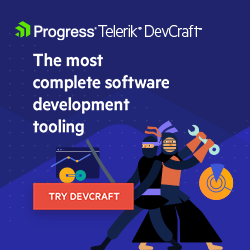5 Video Marketing Tips for Success in 2025 and Beyond

Video is a highly engaging content format. Since it can be time-consuming and costly, you have to be careful with your video strategy and approach. These five tips can help you craft a successful video marketing strategy for your brand.
YouTube just turned 20 years old. This pioneer in video marketing and storage has undeniably changed the digital sphere forever. One could argue that, thanks to YouTube, video has become one of the most powerful tools we have as marketers.
Video not only offers users an easy-to-follow format, but a hyper-engaging one as well. Even in shorter video formats, marketers have mastered the art of user engagement.
Whether you’re new to video marketing or looking to refine your strategy, this post is for you. We’ll look at strategies that can help you create and promote videos for maximum impact.
5 Tips and Strategies for Videos Marketing
You can use video in so many ways in marketing:
- In online ads
- As part of your website design
- To accompany your blog or podcast
- To host live or prerecorded webinars
- On social media
Sometimes it feels like there’s too much you can do with video. The trouble with this is that video can be a time-consuming (and costly) medium to manage—from sourcing or creating the content to editing and distributing it. So, you want to spend your time making the right kinds of video content for your business.
Here are some tips that will help:
1. Create Videos That Align with Your Marketing Goals
When you develop a marketing strategy, it’s critical to have certain objectives you want to accomplish. These objectives—like the big brand goals that impact everything beneath them—need to be SMART:
- Specific
- Measurable
- Achievable
- Relevant
- Time-bound
What’s more, you need to have marketing goals based on your target audience as well as each leg of the unique journey they are going to take with your brand from discovery to conversion. And if you have different audience segments, you’ll need to devise separate objectives for each group.
This is why your video marketing strategy needs to be carefully thought out. You don’t need to use video in every piece of content you publish or message you share. But when you do use video, it really needs to count. Knowing your audience well and what resonates with them will dictate when and how you put video to use.
Let’s use the example of FitOn. This fitness app often publishes videos on its Instagram channel. Most of the videos showcase one of their trainers. However, you can tell there’s quite a variety in terms of audience as well as purpose.
For example, this video says “I wonder how she stays so motivated to workout?” The response is to show her “inner hype girl” dancing and cheering her on.
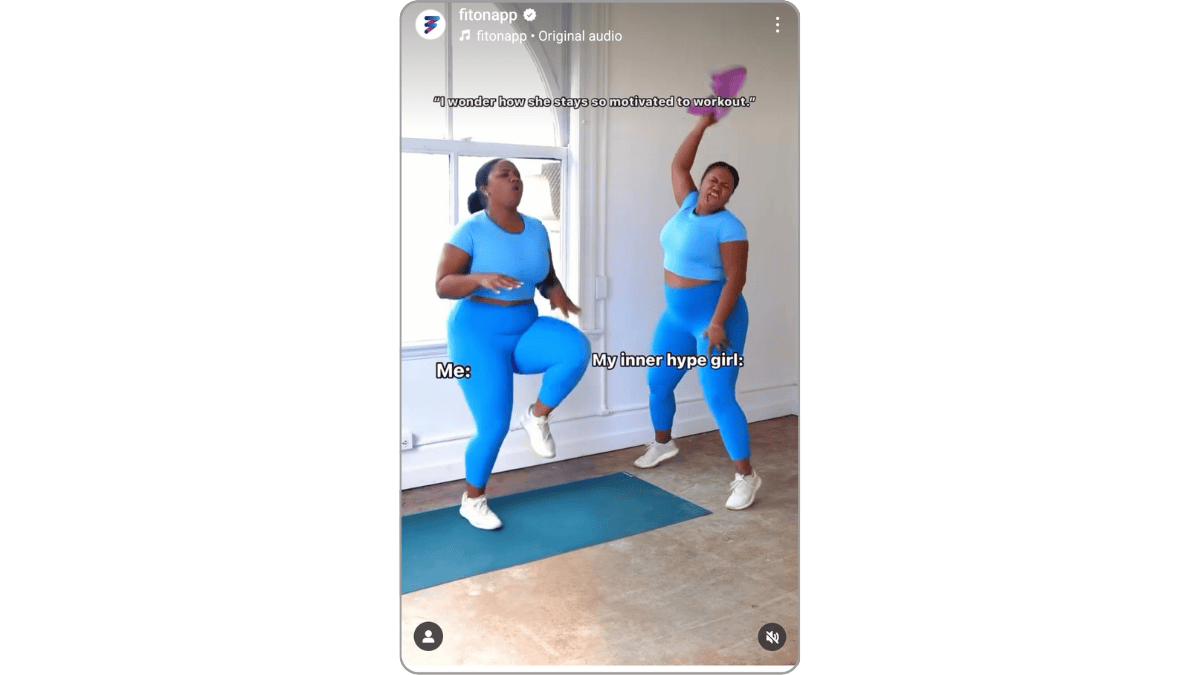
It’s a funny video that anyone can relate to, from the long-time fitness enthusiast to the newbie who might be feeling intimidated or unmotivated. This would be a great video to introduce FitOn’s fun personality to a brand new audience while keeping its existing user base smiling.
Not all of the brand’s videos are like this though. Some of them are instructional, like this one:
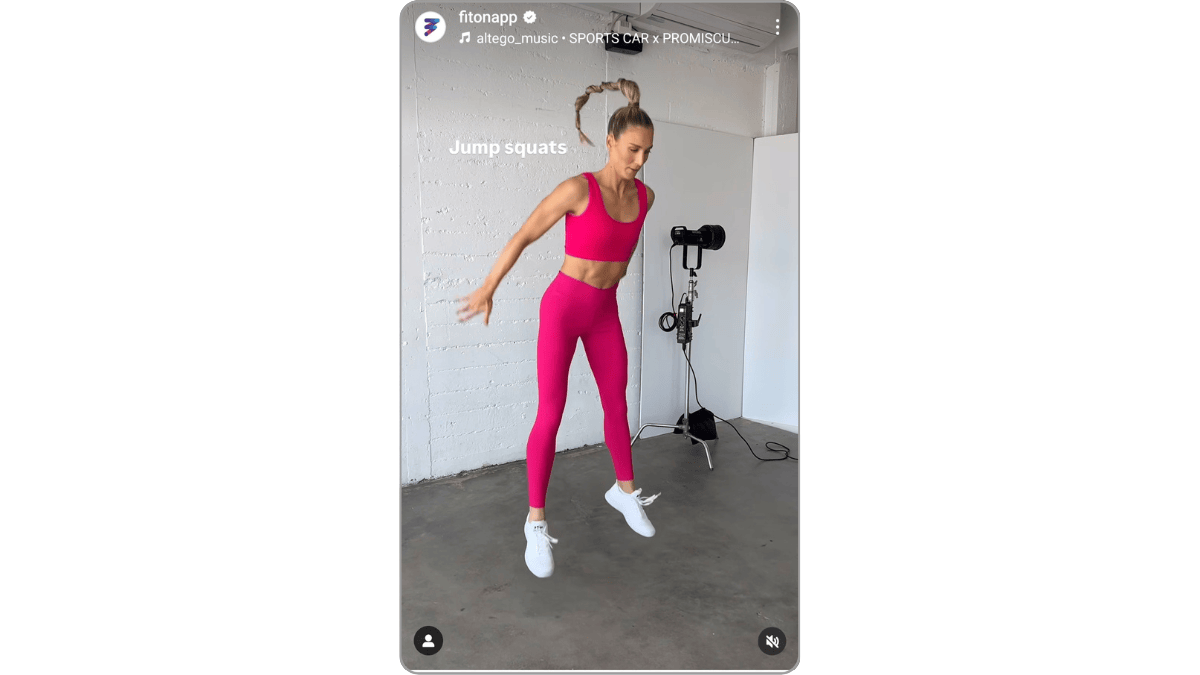
Here we see one of the trainers demonstrating a workout sequence. This video is possibly targeted at these user segments:
- People who’ve never heard of FitOn before and are wondering what kinds of workouts they’ll find on the app
- People who haven’t been in the app in some time but who get excited when they see new workouts are available
In general, marketing videos can help you:
- Generate awareness about your brand
- Educate users and non-users alike
- Hasten the decision-making process
- Direct users to checkout/conversion
- Upsell users on a new service or product
- Improve user retention rates
- Strengthen brand identity and memorability
Once you get inside the minds of your users, you’ll be able to craft video content and campaigns that appeal to them over the course of their relationship with your brand.
2. Make Sure They Work with Your Brand Identity
When you see a certain type of video go viral on TikTok or rack up millions of views, it’s not the video format that made it so popular. There was something special about how the brand or person behind it put it together.
Because of how much work goes into video marketing, you’ll need to do a lot of research into what kinds of video make sense for your brand. Not only that, you need to consider the aesthetics of it. If it doesn’t fit neatly within the rest of your brand’s visual identity, users might shut it down before they discover how intriguing, helpful or funny your message is.
One brand that does a great job of pairing its video aesthetics and messaging with its brand is Unbabel.

This screenshot comes from the welcome video on the homepage of the website. Without seeing the video for yourself, can you guess what this company does?
There are a number of languages visible on the screen—English, Spanish, German, Italian, etc.—so it’s safe to suggest that it’s a multilingual app or solution. And with the sleek animated design and automation imagery found later in the video, one might assume that it’s an AI-powered solution, too (which it is).
Explainer videos are a great way to educate potential users about your solution. But they’re not for every business. At least not in this format.
Think about something like the Dollar Shave Club video that put the company on the map. That explainer video/ad was just the founder of the company talking about how “f***ing great” their razors are.
So, the lesson here is to not write off a video format based on ways you’ve seen it done before. If you feel like the format would work for your purposes, see if there’s a way to make it work with your branding.
For example, this video has 2.4 million views on TikTok. If you didn’t see the brand’s name—H&M—on the page, you probably wouldn’t have a clue it was theirs.
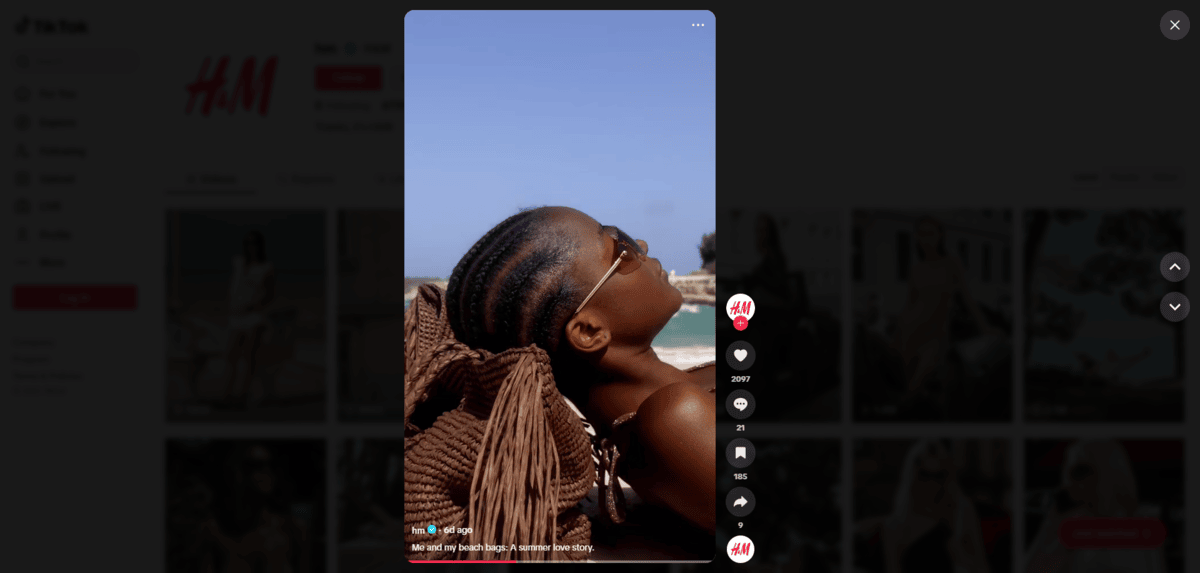
The video shows a woman lying back on a bag on a beach (though it’s not that easy to tell what it is unless you read the caption). In the background, we hear the sound of the ocean. That’s the entire video. It’s peaceful. It’s definitely FOMO-generating. But does it make you want to buy something from H&M? Maybe. Maybe not.
That’s the thing about H&M though. The brand is very influencer-inspired. The brand’s entire vibe and aesthetic feels aspirational. So, while this video post might not be a direct call to action for the brand, it fits really well with the brand identity it’s trying to establish.
3. Come up with Channel-Specific Strategies
Once you’ve come up with a plan for which channels you’re going to post videos to, it’s time to create your content.
The easiest and fastest thing would be to create some videos and then to share them on all your platforms. The problem, though, is that not every video type works for every platform. Plus, marketing channels often serve different purposes for brands.
For example, this is the website for Brett Larkin. The hero section contains a beautiful video reel.
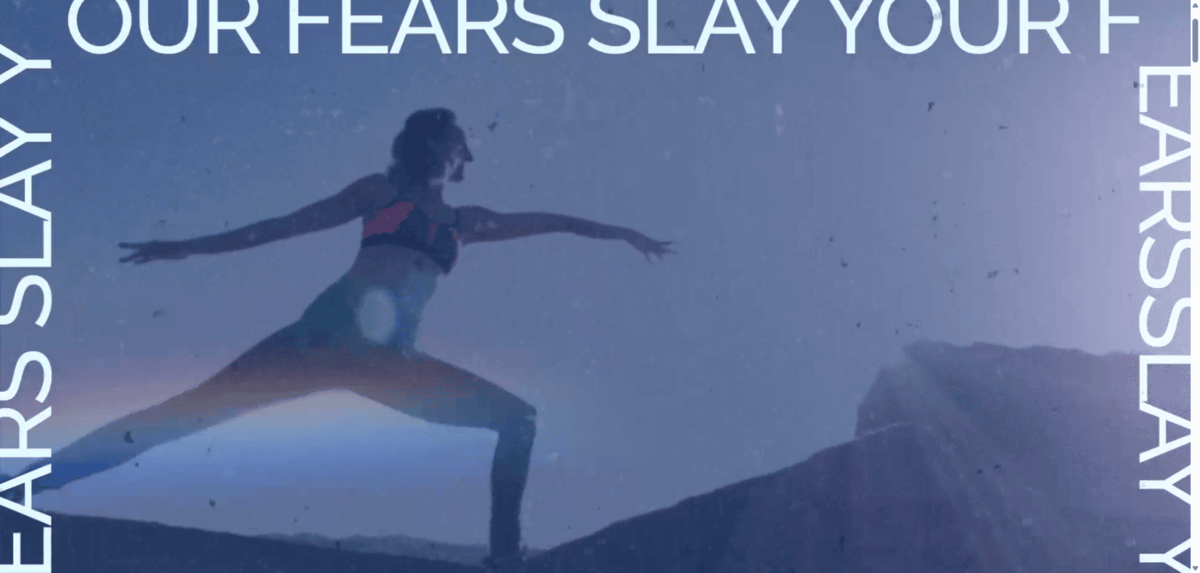
Larkin could share this video over email and on social media, but it probably wouldn’t make sense to do so. This video is meant to introduce people for the first time to Brett Larkin. If someone has subscribed to her email or followed her on social media, this video might be able to get them to stop for a few seconds, but that’s all. They’re well aware of who she is.
There are definitely some kinds of content you can repurpose. But video is tricky. Not only do you have to consider your users’ mindset and goals based on the channel they’re on, but you have to think about the channel’s features and style as well.
Take Instagram vs. YouTube, for instance.
This is a response video that Larkin did on her Instagram page. In it, she talks about certain poses she no longer does in yoga and why.
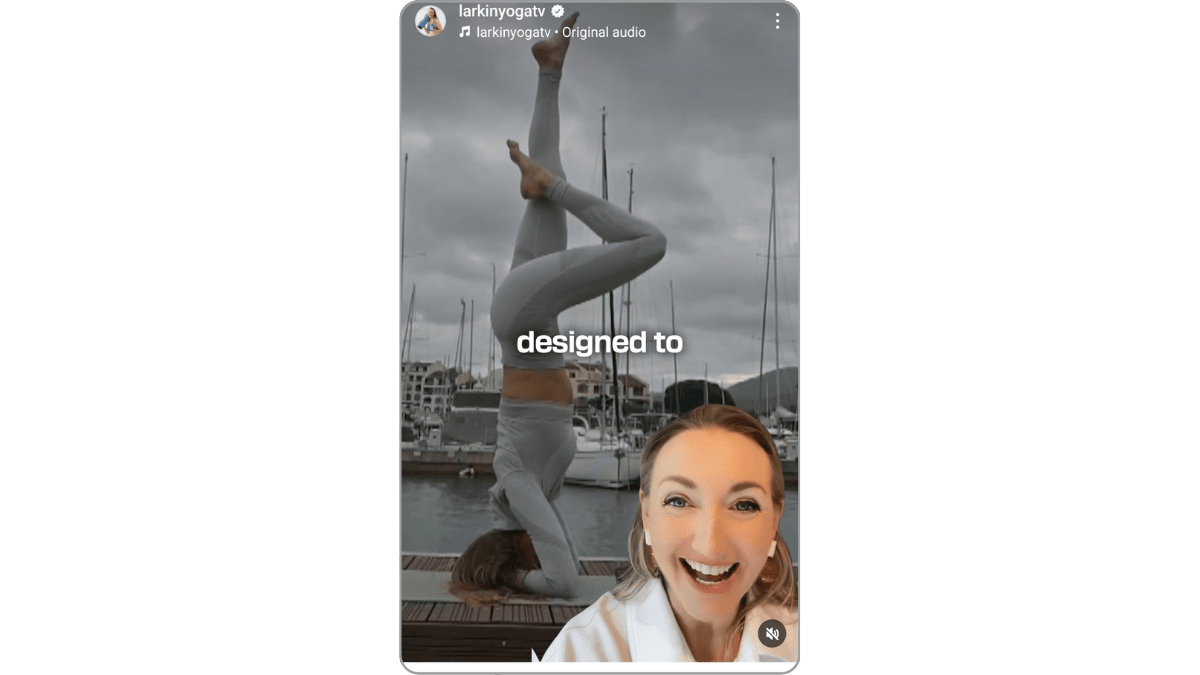
The short response video format is pretty common on platforms like Instagram and TikTok. There are even tools that allow you to take someone else’s video, superimpose your talking head over it and respond in real time.
But you couldn’t (or, rather, wouldn’t want to) produce something like this for YouTube. Larkin, for instance, has a well-crafted collection of lengthier instructional video content on her YouTube channel.
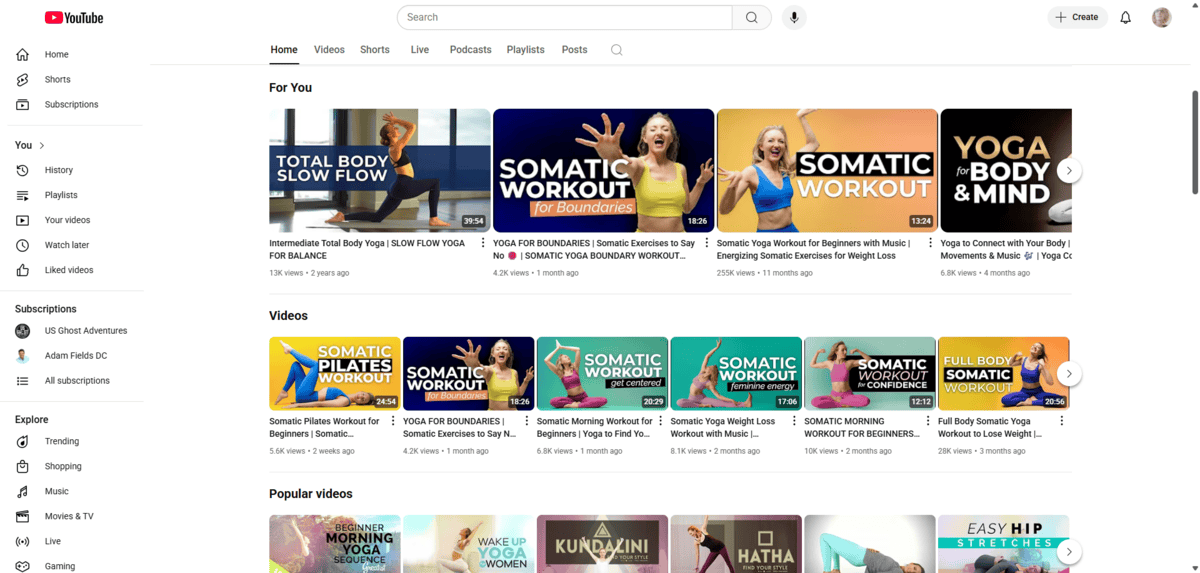
For educators and coaches like Larkin, YouTube acts as a repository for video tutorials and courses. That’s not how everyone uses it, of course. But that’s why you need to know your business and your audience well so you can choose the right video formats and content for each channel you do video marketing on.
4. Start with a Script or Storyboard
Whether you’re filming your own videos or piecing them together from stock video footage, you should have a “story” in your head before you get started. This will allow you to visually and orally tell a story that hooks your audience from start to finish.
Script outlines help you get the spoken message hashed out before you bring the visuals into play. Also, taking the time to write a concise and user-friendly script will allow you to produce a transcript for users who are unable to listen to your video’s audio (more on that in the last point).
Storyboards take care of the visual story told in your video. They establish the storyline or the order in which the visuals should appear. They also help you come up with an overall concept that brings the whole piece together visually for your brand.
The HGTV Smart Home Sweepstakes video is a good example of what happens when you put time into storyboarding.
This is one of the first frames of the video. The title invites viewers to “Step Inside” the smart home prize.
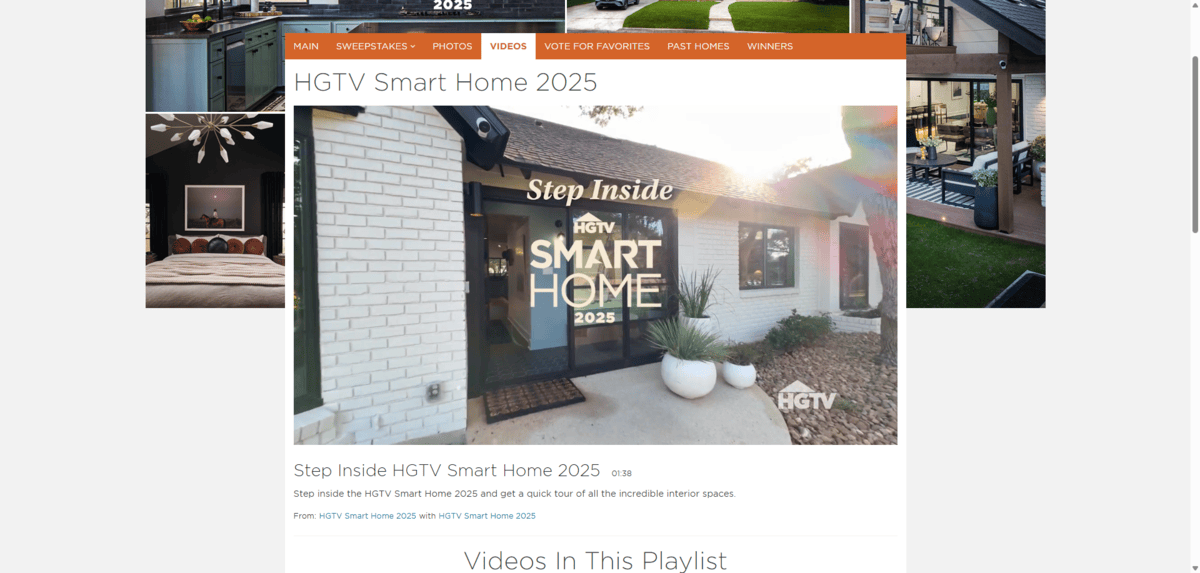
What I find so neat about this video is that it’s reminiscent of those 3D Matterport walk-throughs used in real estate. Except, instead of an interactive 3D model, viewers are taken room by room with the video.
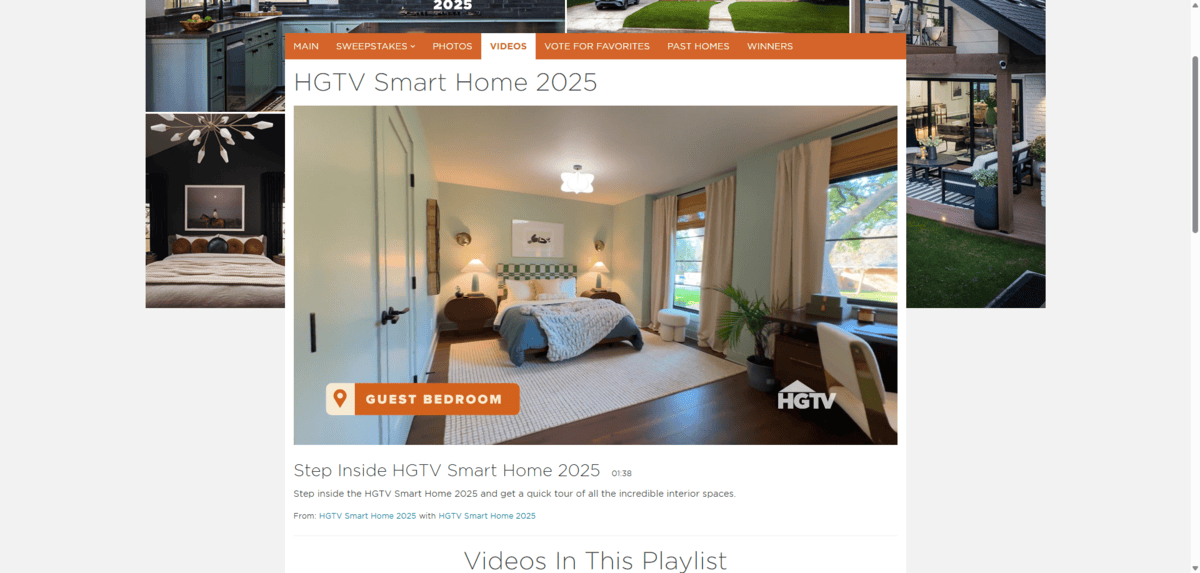
This video also has a vibe similar to MTV Cribs. If you’re not old enough to remember, this was a show where celebrities invited viewers inside their homes and they’d take them from room to room, showing off how cool their pads were.
Considering these smart home giveaways are often worth over a million dollars, I suspect HGTV may have drawn inspiration from that show when putting together these videos. The tracking movements of the camera and the labeling of the rooms all feels very familiar. And this familiarity—along with the allure of winning such a big prize—is sure to keep viewers watching until the end.
That’s exactly what a well-thought-out script and storyboard can do for your videos.
5. Technically Optimize Your Videos
The last key to success in video marketing is paying attention to the technical details. In doing so, you will:
- Enhance the quality of your videos
- Improve the impression your brand makes on its audience through video
- Improve page speed, accessibility and other factors that impact your ranking
Let’s take a look at a couple examples.
This first one comes from the Rolex website. The hero section contains a vertical scroller of five videos. Each one seamlessly slides in after the previous one. There are no delays in loading, no lags in performance or anything like that.
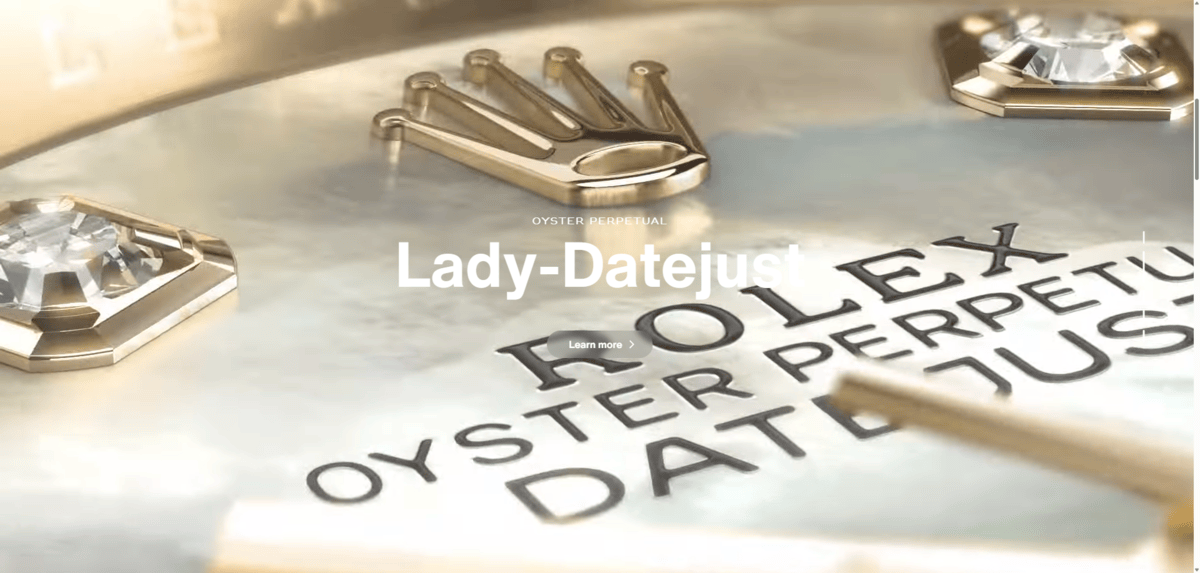
One of the reasons for the smooth performance is likely that this vertical scroller is the only content on the homepage. If it contained sections below it (besides the footer), it might have delays in the video loading times. But as it stands now, it offers a good user experience.
Something else to think about, which I touched on previously, is accessibility.
On social media, it’s expected that videos will come with audio. But not on websites. In fact, autoplay audio is generally frowned upon because of the friction it can create for some users.
The best way to get around this is to incorporate subtitles or a transcript. Here’s how that looks on this Sephora product page for the Ultra Violette Future Screen SPF 50.
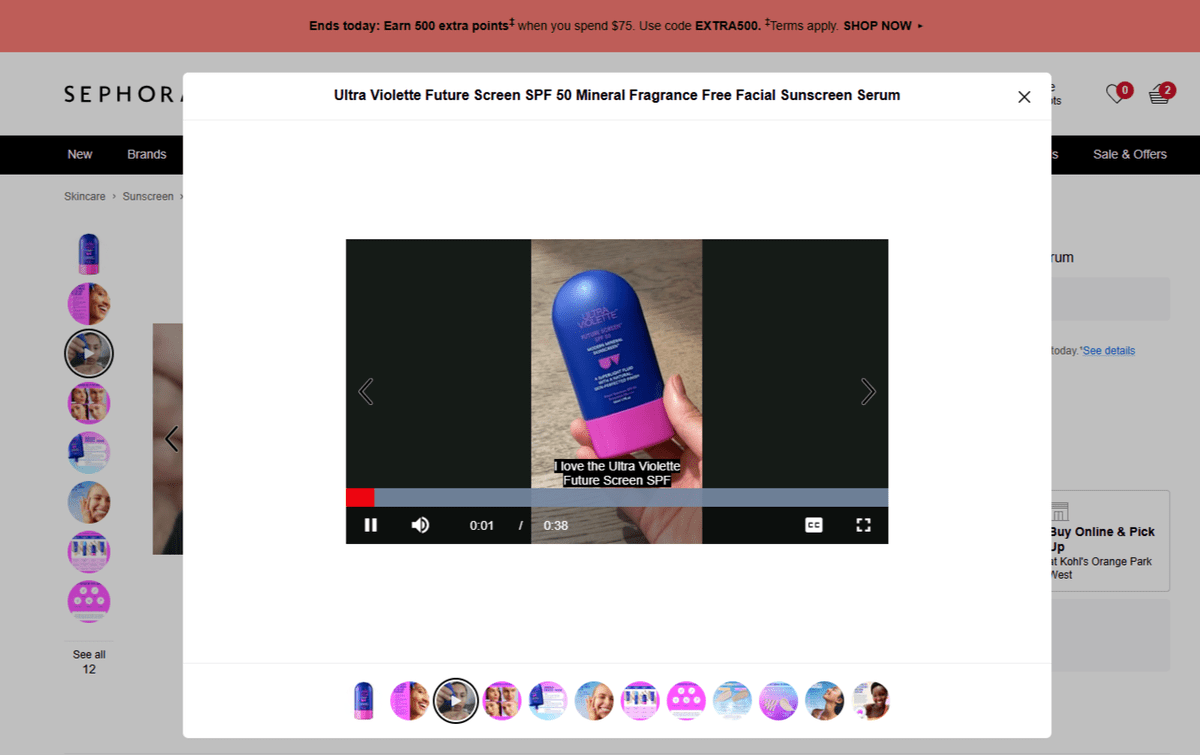
This video lives inside the product image gallery on the left. When selected, the video opens and the subtitles/closed captions automatically display.
Being proactive and attending to technical details like these can help your audience reach a wider audience and have a more positive impact on your marketing outcomes.
Other technical details you might want to think about include:
- Video file size
- Embedding vs. self-hosting the video
- Length/runtime of the video
- Adding title or end cards
- Adding branding or overlay text
- Editing the visuals, like removing bad cuts and wobbly video
- Cleaning up the audio
This might be the least fun part about doing video marketing, but these details can make or break the user experience for some. You can incorporate some of these decisions into the storyboarding process, but the rest you’ll have to save for the end. So, make sure to leave yourself time between producing the video and publication to give it a good polish.
Wrapping Up
YouTube might not be the only place where we publish videos anymore. But it certainly paved the path for us.
Video when done right can do a good job at moving the needle on your marketing efforts.
It’s a great way to differentiate your content from those who use only text and static graphics. It can direct your users’ attention toward your most important announcements and valuable content. It can improve users’ decision-making process by providing more details in a user-friendly format. It can also be useful in SEO, not only making your webpages more engaging (which Google loves), but also giving them more opportunities to rank in search.
As with everything else in marketing, the key is to lay down a strategy first. Then, start small. Your video marketing efforts should not only serve your brand’s goals, but should be tailored to what your users want to see and interact with most.

Suzanne Scacca
A former project manager and web design agency manager, Suzanne Scacca now writes about the changing landscape of design, development and software.

